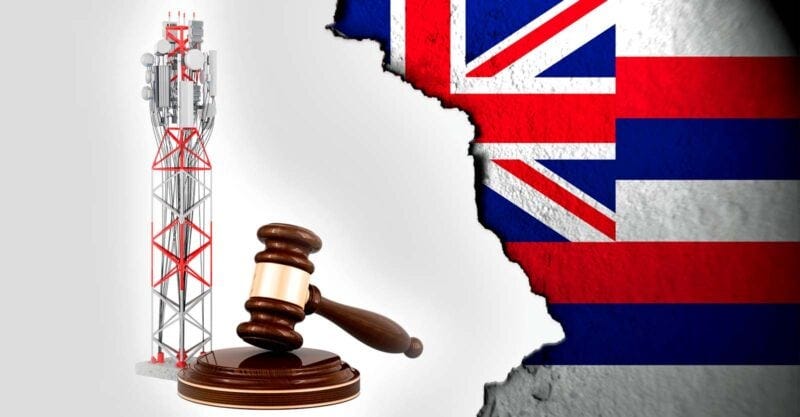Residents of Hawaii’s Big Island Pass Law to Keep Cell Towers Away from Homes, Schools
The ordinance requires new cell towers and antennas to be at least 600 feet away from homes & schools. Debra Greene of Safe Tech Hawaii said it "paves the way" for other jurisdictions to follow suit.
New cell towers and antennas on Hawaii’s Big Island must be at least 600 feet away from homes and schools, thanks to an ordinance residents recently passed.
The ordinance is the first of its kind in the state, said Debra Greene, Ph.D., founding director of Safe Tech Hawaii.
“It paves the way for other local jurisdictions in Hawaii to follow suit and implement similar ordinances,” Greene said. “Passage of this bill also adds momentum to the nationwide and global trend of regulating tower and antenna deployments.”
Hawaii made news earlier this year when the state announced plans to become the “first fully fiber-enabled state” by 2026.
Fiber-based internet, which uses fiber-optic cables, is much faster and more reliable than wireless networks, including 5G, according to a 2018 report by the National Institute for Science, Law and Public Policy.
Wireless companies have to show they’ve done their homework
The new ordinance pertains to Hawaii County, which covers the state’s island of Hawai‘i, known as the Big Island. It took effect on June 18, after approval by the Hawaii County Council.
The ordinance codifies a “comprehensive set of standards” for wireless infrastructure projects, Greene said. “The Hawaii County community is now much more protected from the wild west of wireless.”
In addition to requiring cell towers and antennas to be at least 600 feet from schools and homes, the bill requires companies that want to install their wireless equipment to first submit a host of documents, including:
Building plans certified by a licensed structural engineer verifying that the tower will survive winds of 100 mph or more.
Documentation proving that the proposed tower or antenna can’t feasibly be placed on an existing tower or site.
Documentation showing the chosen site is the least intrusive.
Documentation of proactive efforts to notify the affected community.
Verification of notification letters sent to all landowners and lessees within a 500-foot perimeter.
Documentation of compliance with the Hawaii State Fire Code.
Documentation of a completed National Historic Preservation Act review.
A visual impact analysis.
The ordinance also updates definitions of rapidly changing wireless technologies, Greene said.
It’s a ‘juggling act’ to protect health while honoring federal law
Local communities face challenges when it comes to keeping wireless infrastructure out of their neighborhoods.
That’s because Section 704 of the Telecommunications Act of 1996 prohibits local authorities from denying cell tower applications based on health and environmental effects, as long as the cell tower operates within the radiofrequency radiation limit set by the Federal Communications Commission (FCC).
Children’s Health Defense’s (CHD) 704 No More initiative is raising money to legally challenge the federal policy.
A 2023 investigation by The Defender found that the FCC largely based its safety limit on a handful of studies done in the 1970s and 1980s.
Greene said Hawaii County’s bill “represents the challenging juggling act of protecting the community, while still staying within the confines of outdated federal laws that are based largely on limited science from the 1980s.”
Miriam Eckenfels, director of CHD’s Electromagnetic Radiation (EMR) & Wireless Program, said, “It is incredibly important for communities to have strong, protective wireless ordinances. … Having a strong protective ordinance makes fighting proposed cell towers much easier, and levels the playing field.”
“This is something every community should be worried about and pursuing now, even if no cell towers are yet proposed,” she said.
Through its Stop5G Community Empowerment Consulting, CHD’s EMR & Wireless team works with communities to help draft and pass protective wireless ordinances.
Related articles in The Defender
‘5G — The Untold Story’: New Documentary Spotlights Health Hazards of Wireless Radiation
FCC Limits for Wireless Radiation Exposure Decades Out of Date, Experts Say
Public Benefit or Big Profits for Big Telecom? Here’s What’s Really Driving the 5G Rollout.
MAHA Report ‘Falls Short’ on Linking Wireless Radiation to Chronic Disease, Experts Say
Telecom Industry Not Required to Accommodate People Sickened by Cell Tower Radiation, Courts Rule





